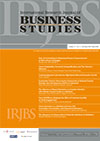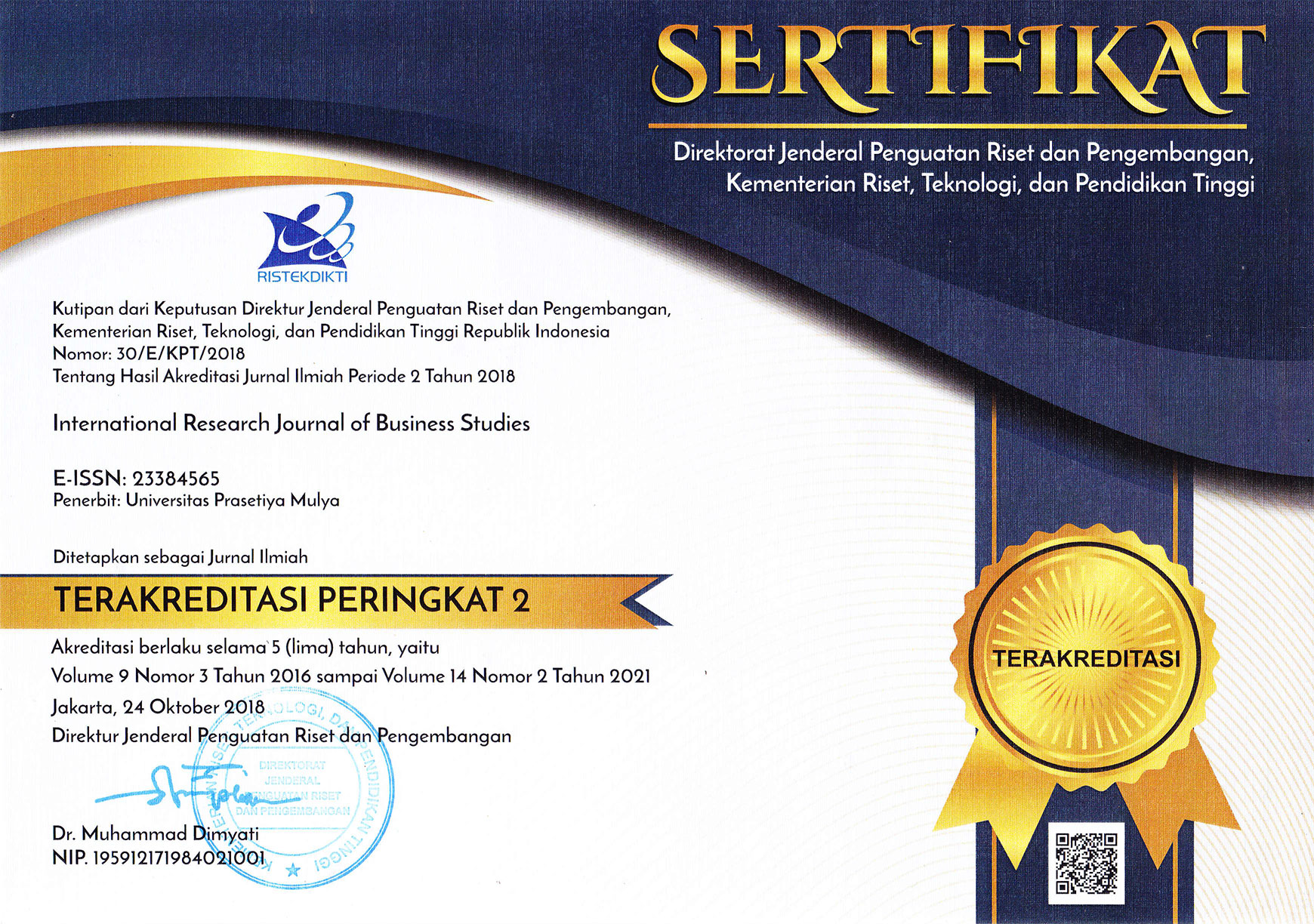The Impact of Social Media Brand Community and Brand-Community Commitment on Customer Based Brand Equity
DOI:
https://doi.org/10.21632/irjbs.18.1.27-41Keywords:
Brand-community commitment, Customerbased-brand equity, Green startup business, Social media brand equityAbstract
In green start-up business competition, the main challenge lies in focusing on social and environmental impacts. The purpose of this study is to describe the impact of Social Media Brand Community (SMBC) on Customer-Based Brand Equity (CBBE) mediated by Brand-Community Commitment. This quantitative study uses a purposive sampling technique and the respondents of this study are members of the green start-up brand community as many as 125 respondents, data research are tested and analyzed using PLS-SEM. The findings of this study reveal that the characteristics of SMBC (shared awareness, rituals and traditions, and moral responsibility) directly affect brand awareness, perceived quality, and brand loyalty which are elements of CBBE while brand-community commitment does not affect to CBBE. To improve CBBE, it is necessary to focus on strengthening the characteristics of the brand community. The implementation of brand community in Indonesian green start-up companies has a real impact on marketing performance, especially in growing brand awareness within the community.
References
Aibing, Z, (2018), “Research on the influence of online community marketing on the brand relationship quality,” Independent Study, Siam University, Bangkok, (Feb 6th , 2023,) Online wwbsite : https://e-research.siam.edu/kb/research-on-the-influence-of-online-community/
Bashir, M. A., Ali, N. A., Jalees, T., (2020), “Impact of Brand Community Participation on Brand Equity Dimension in Luxury Apparel Industry - A Structural Equation Modeling Approach.,” South Asian J. Manag. Sci., vol. 14, no. 2, pp. 263–276, doi: 10.21621/sajms.2020142.07.
Hair, J., Hult, G. T. M., Ringle, C., Sarstedt, M., (2022), A Primer on Partial Least Squares Structural Equation Modeling (PLS-SEM), 3rd ed. Sage Publication, doi: 10.1007/978-3-030-80519-7.
Hair Jr, J. F., Howard, M., Nitzl C., (2020), “Assessing measurement model quality in PLS-SEM using confirmatory composite analysis,” J. Bus. Res., vol. 109, pp. 101–110, doi: 10.1016/j.jbusres.2019.11.069.
Hoang, HT, Wang, F., Ngo, Q.V, Chen, M., (2020), “Brand equity in social media-based brand community,” Mark. Intell. Plan., vol. 38, no. 3, pp. 325–339, doi: 10.1108/MIP-01-2019-0051.
Hur W., Ahn, K., Kim, M (2011), “Building brand loyalty through managing brand community commitment,” Manag. Decis., vol. 49, no. 7, pp. 1194–1213, , doi: 10.1108/00251741111151217.
Jang, H., Olfman, L. Ko, I. Koh, J., Kim, K., (2008), “The Influence of On-Line Brand Community Characteristics on Community Commitment and Brand Loyalty,” Int. J. Electron. Commer., vol. 12, no. 3, pp. 57–80, doi: 10.2753/JEC1086-4415120304.
Keller, K.L., (2001), “Building Customer-Based Brand Equity: A Blueprint for Creating Strong Brands.” Marketing Science Institute
Kim, J., (2015), “Sustainability in social brand communities: influences on customer equity,” J. Glob. Sch. Mark. Sci., vol. 25, no. 3, pp. 246–258, , doi: 10.1080/21639159.2015.1041783.
Laroche, M, Habibi, M. R., Richard, M.O., (2013), “To be or not to be in social media: How brand loyalty is affected by social media?,” Int. J. Inf. Manag., vol. 33, no. 1, pp. 76–82, doi: 10.1016/j.ijinfomgt.2012.07.003.
Laroche, M., Habibi, M. R., Richard, M.-O., Sankaranarayana R., (2012), n, “The effects of social media, based brand communities on brand community markers, value creation practices, brand trust and brand loyalty,” Comput. Hum. Behav., vol. 28, no. 5, pp. 1755–1767, doi: 10.1016/j.chb.2012.04.016.
Liao, J., Yang, D., Wei, H. Guo Y., (2019), “The bright side and dark side of group heterogeneity within online brand community,” J. Prod. Brand Manag., vol. 29, no. 1, pp. 69–80, , doi: 10.1108/JPBM-08-2018-1972.
McAlexander J. H., Schouten J. W., Koenig, H. F. (2002), “Building Brand Community,” J. Mark., vol. 66, no. 1, pp. 38–54, doi: 10.1509/jmkg.66.1.38.18451.
Magalhaes, R. P. C., (2019) “What is a Startup? A Scoping Review on How the Literature Defines Startup,” Disertasi, Universidade Catolica Portuguesa
Makower, J., & C. Pike, (2009) Strategies for The Green Economy: Opportunities and Challenges in The New World of Business. New York: McGraw-Hill Education
Pakpahan, R & D. Yoesgiantoro, (2023), “ANALYSIS OF THE INFLUENCE OF FLEXING IN SOCIAL MEDIA ON COMMUNITY LIFE,” JISICOM J. Inf. Syst. Inform. Comput., vol. 7, no. 1, doi: 10.52362/jisicom. v7i1.1093.
Santos, Z.R, Cheung, C. M. K., Coelho, P. S, Rita, P. (2023), “Consumer engagement in social media brand communities: A literature review,” Int. J. Inf. Manag., vol. 63, p. 102457, doi: 10.1016/j.ijinfomgt.2021.102457.
Sirait N (July, 2023,) “Citra Positif Start-up Perlu Dibentuk lewat Public Relations.”. Online website: https://mediaindonesia.com/teknologi/588579/citra-positif-start-up-perlu-dibentuk-lewat-public-relations
Downloads
Submitted
Accepted
Published
How to Cite
License
Copyright (c) 2025 Pepey Riawati Kurnia, Budi Aryani, Dewi Purnama Sari (Author)

This work is licensed under a Creative Commons Attribution-ShareAlike 4.0 International License.
Journal Author(s) Rights
For IRJBS to publish and disseminate research articles, we need publishing rights (transferred from the author(s) to the publisher). This is determined by a publishing agreement between the Author(s) and IRJBS. This agreement deals with the transfer or license of the copyright of publishing to IRJBS, while Authors still retain significant rights to use and share their own published articles. IRJBS supports the need for authors to share, disseminate and maximize the impact of their research and these rights, in any databases.
As a journal Author, you have rights to many uses of your article, including use by your employing institute or company. These Author rights can be exercised without the need to obtain specific permission. Authors publishing in IRJBS journals have comprehensive rights to use their works for teaching and scholarly purposes without needing to seek permission, including:
- use for classroom teaching by Author or Author's institution and presentation at a meeting or conference and distributing copies to attendees;
- use for internal training by the author's company;
- distribution to colleagues for their research use;
- use in a subsequent compilation of the author's works;
- inclusion in a thesis or dissertation;
- reuse of portions or extracts from the article in other works (with full acknowledgment of the final article);
- preparation of derivative works (other than commercial purposes) (with full acknowledgment of the final article);
- voluntary posting on open websites operated by the author or the author’s institution for scholarly purposes,
(But it should follow the open access license of Creative Common CC-by-SA License).
Authors/Readers/Third Parties can copy and redistribute the material in any medium or format, as well as remix, transform, and build upon the material for any purpose, even commercially. Still, they must give appropriate credit (the name of the creator and attribution parties (authors' detail information), a copyright notice, an open access license notice, a disclaimer notice, and a link to the material), provide a link to the license, and indicate if changes were made (Publisher indicates the modification of the material (if any) and retain an indication of previous modifications.
Authors/Readers/Third Parties can read, print and download, redistribute or republish the article (e.g. display in a repository), translate the article, download for text and data mining purposes, reuse portions or extracts from the article in other works, sell or re-use for commercial purposes, remix, transform, or build upon the material, they must distribute their contributions under the same license as the original Creative Commons Attribution-ShareAlike (CC BY-SA).
This work is licensed under a Creative Commons Attribution-ShareAlike 4.0 International License.








